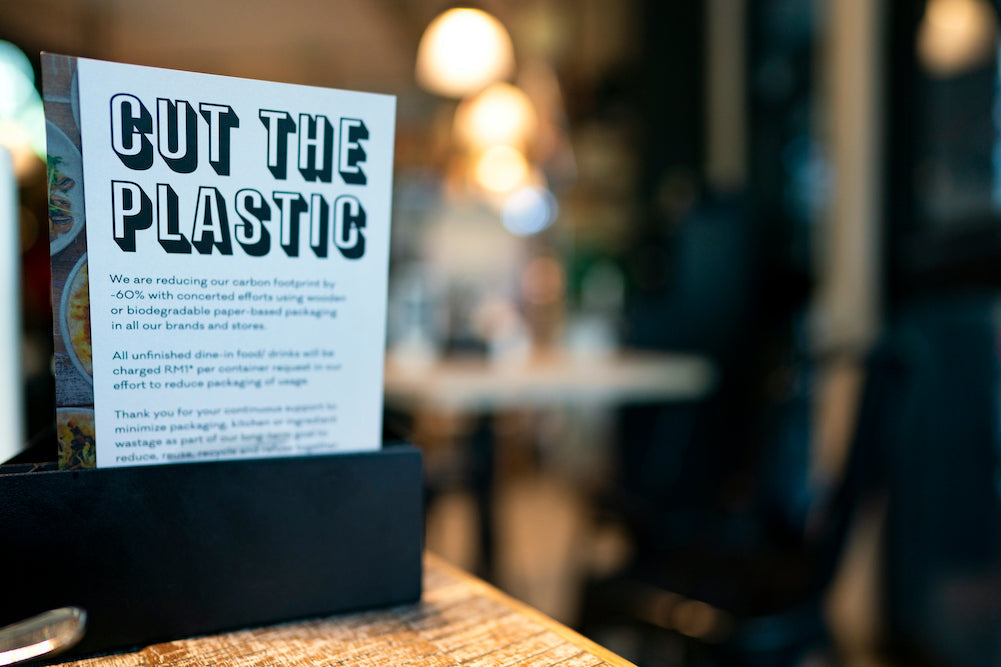Plastic pollution has become a pressing global issue, necessitating innovative solutions to combat its adverse environmental effects. One company at the forefront of this movement is Loliware, an organization dedicated to providing sustainable alternatives to single-use plastics. In this blog post, we will delve into Loliware’s approach to sustainability, the advantages of their products, their ethical considerations, collaborations, and their impact on creating a plastic-free future.
Loliware’s Approach to Sustainability
Loliware’s commitment to sustainability is evident in every aspect of their operations. They prioritize the use of renewable materials, with a particular focus on seaweed. Seaweed is an abundant and regenerative resource that can be cultivated without depleting natural habitats or resources. By harnessing the power of seaweed, Loliware reduces reliance on non-renewable resources and promotes a more sustainable future.
One key aspect of Loliware’s products is their biodegradability and compatibility with the circular economy. Their items are designed to break down naturally over time, reducing the environmental impact associated with traditional plastics. Through this approach, Loliware contributes to the circular economy, minimizing waste and keeping resources in circulation.
Advantages of Loliware’s Products
Loliware’s products offer several advantages in the quest for sustainability. Firstly, their alternatives to plastic are biodegradable and compostable. This means that they can safely break down without leaving behind harmful microplastics or polluting the environment. Unlike traditional plastics that persist for hundreds of years, Loliware’s products are designed to disappear naturally, reducing their long-term impact.
Additionally, Loliware’s products contribute to carbon capture and blue carbon ecosystems. Seaweed, a key component of their materials, plays a crucial role in storing carbon. By utilizing seaweed in their products, Loliware helps combat climate change by capturing and storing carbon dioxide from the atmosphere. This aligns with their vision of a plastic-free future that simultaneously addresses climate issues.
Ethical Considerations
A strong sense of social responsibility drives Loliware. They prioritize inclusivity, diversity, and ethical practices within their operations. By fostering a safe and supportive workplace environment, they ensure their employees are treated respectfully and fairly. Loliware believes in transparency and openly communicates with their stakeholders, providing information about their products, materials, and processes. This empowers consumers to make informed choices and understand the environmental and social impact of their purchases.
Collaborations and Impact
Creating meaningful change requires collaboration, and Loliware actively seeks partnerships with like-minded organizations, businesses, and individuals. They aim to amplify their impact by working together and fostering a collective effort to address plastic pollution. Through these collaborations, Loliware expands their reach and promotes adopting sustainable practices on a larger scale. Their initiatives contribute to a growing movement towards a plastic-free future.
Final Thoughts
Loliware exemplifies the spirit of sustainability and ethical practices in the fight against plastic pollution. Their innovative use of seaweed-based materials offers sustainable alternatives to single-use plastics. Their commitment to the circular economy, carbon capture, and social responsibility sets an example for other companies. By supporting Loliware and exploring their products, individuals can actively contribute to a plastic-free future and positively impact the environment.
Related Topic:
Plastic Straws: Unveiling the Environmental Impact and Harm to Wildlife
Plastic straws have become ubiquitous in our daily lives, accompanying our beverages at restaurants, cafes, and fast-food chains. However, there is growing concern about these seemingly harmless items’ environmental impact on our planet. This article delves into the profound environmental consequences of plastic straws, highlighting their harm to wildlife and the urgent need for change.
The Environmental Impact of Plastic Straws
Plastic straws are single-use items that contribute significantly to pollution and waste accumulation. Their lightweight nature makes them prone to being carried by wind and water, leading to their presence in landfills, oceans, and other ecosystems. Furthermore, the recycling of plastic straws poses a challenge due to their small size and low recycling value, resulting in a vast majority ending up as waste.
Plastic straws also contribute to land and water pollution. When improperly disposed of, they leach harmful chemicals into the soil and groundwater, causing environmental contamination. In water bodies, plastic straws can have devastating consequences. They often end up in oceans, accumulating in large swirling currents known as gyres, such as the notorious Great Pacific Garbage Patch. This accumulation not only harms marine life but also degrades the health of entire ecosystems.
The Harm to Wildlife and Marine Ecosystems
Plastic straws pose a grave threat to wildlife, particularly in marine ecosystems. Marine animals, including sea turtles, seabirds, whales, and fish, are highly vulnerable to the hazards of plastic straws. Mistaking them for food, these animals ingest straws, leading to internal injuries, blockages, and even death. The consequences extend to entanglement as well. Larger marine species, like seals, sea lions, and dolphins, can become trapped or injured by plastic straws, hindering their mobility, feeding, and overall well-being.
Moreover, plastic straws contribute to habitat degradation. Delicate ecosystems such as coral reefs and seagrass beds suffer from the negative impacts of plastic straw pollution. These environments are critical for maintaining biodiversity and providing habitat for numerous marine species. When smothered and damaged by discarded straws, these habitats suffer, disrupting the delicate balance of marine life.
Transfer of Chemicals and Microplastic Formation
Plastic straws can leach harmful chemicals into the water, especially when exposed to sunlight, heat, or prolonged contact. Chemicals like bisphenol A (BPA) and phthalates, commonly found in plastic products, can have detrimental effects on marine organisms’ health and reproductive systems. As these chemicals move up the food chain, they can ultimately impact larger predators, including humans.
Over time, plastic straws break down into smaller fragments known as microplastics. These tiny particles, typically less than 5 millimeters in size, have become pervasive in marine environments. Marine organisms, such as filter feeders like mussels and zooplankton, consume these microplastics, unknowingly ingesting potential toxins. The ingestion of microplastics has been shown to harm marine organisms’ health, affecting their feeding, reproduction, and overall survival.
Awareness, Action, and Solutions
Fortunately, the negative impact of plastic straws has raised global awareness and spurred environmental activism. Individuals, businesses, and governments have recognized the urgent need for change. Many jurisdictions have implemented regulations and bans on plastic straws, encouraging the use of sustainable alternatives. Furthermore, individuals and businesses have embraced the shift towards reusable straws made from materials like stainless steel, silicone, or bamboo.
However, the solution extends beyond simply replacing plastic straws. A comprehensive approach to addressing the issue of plastic straws involves several key aspects:
- Reducing Overall Plastic Consumption: Reducing plastic consumption is essential to tackle the problem at its root. Individuals can consciously minimize their use of single-use plastics, including straws, by opting for alternatives or going without straws when possible. Businesses can also play a significant role by offering straws only upon request or exploring sustainable options.
- Improving Waste Management Systems: Effective waste management is crucial in minimizing the impact of plastic straws. Governments and municipalities should invest in robust recycling infrastructure and implement efficient waste collection and sorting systems. Proper disposal and recycling of plastic straws can help prevent them from ending up in landfills, water bodies, and ecosystems.
- Promoting Recycling and Sustainable Materials: Encouraging recycling is important for plastic waste management. Raising awareness about the recyclability of certain types of plastic straws, such as polypropylene, can motivate individuals and businesses to participate in recycling programs. Additionally, promoting sustainable materials like biodegradable or compostable alternatives can help reduce the environmental impact of straws.
- Fostering Innovation in Sustainable Materials and Packaging: Technological advancements and innovative solutions are critical for reducing plastic waste. Research and development efforts should focus on creating sustainable materials that can be alternatives to plastic straws. This includes exploring plant-based materials, such as bamboo, paper, or edible options, and reusable options, like stainless steel or silicone straws.
- Educating and Raising Awareness: Spreading awareness about the environmental impact of plastic straws is essential for driving behavior change. Education campaigns can highlight the harm caused to wildlife and ecosystems, emphasizing the need for sustainable alternatives. By informing and empowering individuals, we can collectively work towards reducing plastic straw usage and making informed choices.
- Collaboration and Partnerships: Addressing the issue of plastic straws requires collaboration among various stakeholders. Governments, businesses, non-profit organizations, and individuals should work together to develop and implement strategies for reducing plastic straw consumption. Partnerships can lead to innovative solutions, increased access to sustainable alternatives, and widespread adoption of environmentally friendly practices.
Final Thoughts
Plastic straws have a significant environmental impact and seriously threaten wildlife and ecosystems. We can make a positive change by taking a comprehensive approach that encompasses reducing overall plastic consumption, improving waste management systems, promoting recycling and sustainable materials, fostering innovation, raising awareness, and fostering collaboration. It’s time to rethink our reliance on plastic straws and embrace sustainable alternatives to protect our planet and its wildlife. Together, we can create a future where plastic straws are no longer a source of harm but a symbol of our commitment to a healthier and more sustainable world.









Reader Interactions